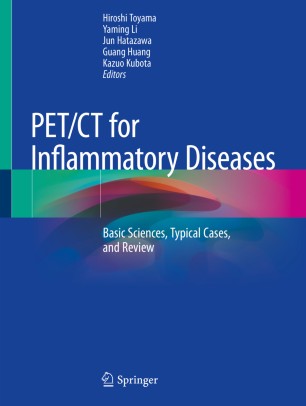PET/CT برای بیماری های التهابی: علوم پایه، موارد مدل و بررسی ۲۰۲۰
PET/CT for Inflammatory Diseases: Basic Sciences, Typical Cases, and Review 2020
دانلود کتاب PET/CT برای بیماری های التهابی: علوم پایه، موارد مدل و بررسی ۲۰۲۰ (PET/CT for Inflammatory Diseases: Basic Sciences, Typical Cases, and Review 2020) با لینک مستقیم و فرمت pdf (پی دی اف)
| نویسنده |
Guang Huang, Hiroshi Toyama, Jun Hatazawa, Kazuo Kubota, Yaming Li |
|---|
| تعداد صفحهها |
233 |
|---|---|
| نوع فایل |
|
| حجم |
26 Mb |
| سال انتشار |
2020 |
89,000 تومان
معرفی کتاب PET/CT برای بیماری های التهابی: علوم پایه، موارد مدل و بررسی ۲۰۲۰
این راهنمای جامع، مزایای FDG PET/CT را در تشخیص بیماری های التهابی روشن می کند. اگرچه FDG PET/CT ابزار ارزشمندی برای تشخیص بیماری های التهابی فراهم می کند، شواهد بالینی برای کاربرد آن هنوز محدود است.
برای پرداختن به این شکاف، هر فصل از این کتاب شامل شرح مفصلی از نحوه استفاده از FDG PET/CT در رابطه با یک بیماری التهابی خاص است. علاوه بر این، نویسندگان تظاهرات بالینی دقیق، از جمله تصاویر کلیدی، تفسیر، تکنیک ها و تشخیص آن ها را مورد بحث قرار می دهند. به این ترتیب، به خوانندگان این امکان را می دهد تا ببینند FDG PET/CT چقدر برای تشخیص سارکوئیدوز قلبی و سندرم التهابی آئورت، و همچنین بیماری های روماتیسمی و نوریت، و برای تشخیص کانون های بیماری برای التهاب یا تب با منشأ ناشناخته ارزشمند است.
به دلیل گستردگی، این مجموعه عالی منبع ارزشمندی برای رادیولوژیست ها و پزشکان مرتبط با پزشکی هسته ای و همچنین متخصصان قلب، جراحان قلب و عروق و روماتولوژیست ها است.
This comprehensive guide sheds new light on the benefits of FDG PET/CT in diagnosing inflammatory diseases. Although FDG PET/CT offers an invaluable tool for diagnosing inflammatory diseases, the clinical evidence on its application remains limited.
To remedy this gap, each chapter of this book includes detailed descriptions of how FDG PET/CT can be used in connection with a specific inflammatory disease. Further, the authors discusses the precise clinical presentation, including key images and their interpretation, techniques and diagnosis. As such, it allows readers to see for themselves how valuable FDG PET/CT is for the diagnosis of cardiac sarcoidosis and aortitis syndrome, as well as rheumatic diseases and neuroimflammation, and the detection of the disease focus of inflammation or fever of unknown origin.
Given its scope, this excellent collection is a valuable resource for radiologists and physicians who are involved in nuclear medicine, as well as cardiologists, cardiovascular surgeons, and rheumatologists.



